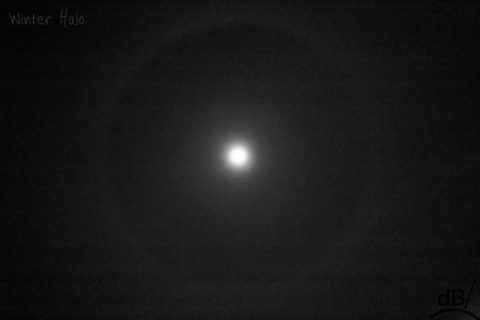There was a gorgeous winter halo around the pre-full moon last night. The near 22° halo is an optical phenomenon occurs as moonlight is refracted by millions of ice crystals suspended in the atmosphere. The halo is large with a radius approximately the size of an outstretched hand at arm’s length. As light passes through the 60° apex angle of the hexagonal ice crystals it is refracted twice resulting in deviation angles ranging from 22° to 50°. The angle of minimum deviation is almost 22° (21.84° on average; 21.54° for red light and 22.37° for blue light).

Apparently in folklore, although I’d never heard this, such moon rings are supposed to warn of approaching storms. They often appear when there are thin cirrus or cirrostratus clouds, which do appear a few days before large weather fronts, but winter halos also form without any associated weather change. Moreover, they’re actually rather common, more common than big storms. So, you’re probably better off watching for a red sky in the morning or checking how wet your seaweed is.